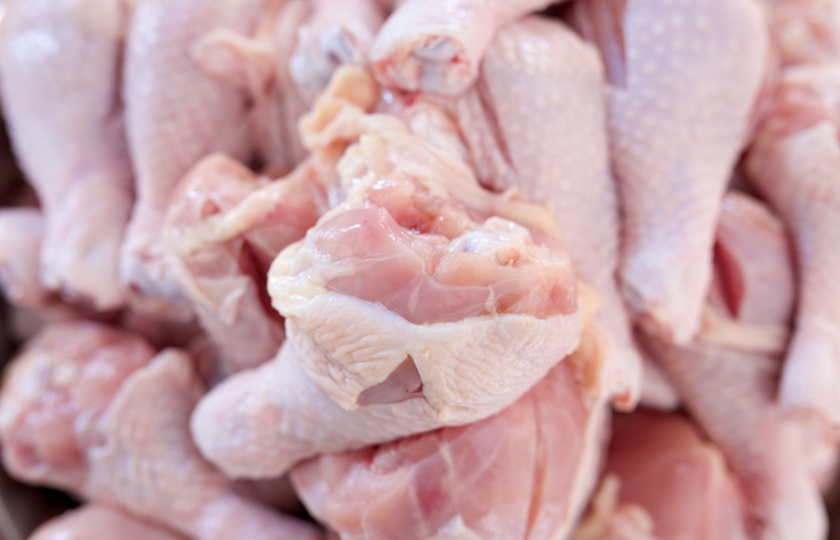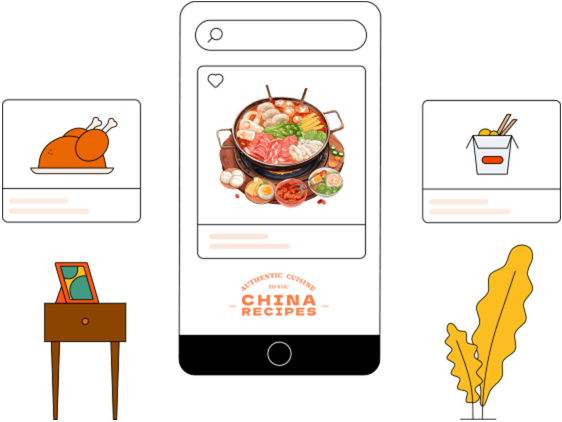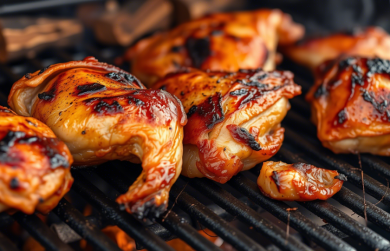Cooking Debate: Should I Not Be Trimming Chicken Thighs

Are you supposed to trim chicken thighs?
You should trim chicken thighs appropriately. When handling them, mainly remove the excess fat and loose skin and meat. This way, the chicken will be heated more evenly during cooking and the texture will be better.
Why trimming is recommended:
The fat layer under the skin of chicken thighs is relatively thick. If cooked directly, it is likely to produce too much oil and taste greasy. Cut off the obviously thick parts at the edges and keep the thinner - skinned area in the middle. This will make it more crispy when fried or roasted.
There are sometimes dark fascia or small pieces of bone near the leg bone. Use kitchen scissors to cut around the bone to avoid getting pieces of bone in your teeth when eating.
The specific operation is very simple:
Put the chicken thigh skin - side down. Use your fingers to feel the fat lumps protruding on both sides of the bone and cut them off along the meat.
Flip it over and check the skin side. If there are hanging pieces of loose skin at the edges, just trim them neatly.
Finally, rinse off the bone fragments with cold water and pat dry with paper towels before marinating.
If you are going to make stews or curries, you can leave the fat untrimmed. The long - time simmering will make the fat melt and add flavor to the broth. However, if you are frying or roasting, it is still recommended to do the trimming. I usually keep a bit of the skin and put the skin - side down in the pan first when frying. This way, it can release oil without being too greasy.
What's the best tool for trimming chicken thighs?
Kitchen scissors are definitely the best tool! Compared with a kitchen knife, scissors can handle the connection between the skin and meat more precisely. Especially when dealing with the fascia around the bone, they don't slip and are particularly effortless.
Here's a little tip for choosing scissors:
It's best to pick those that are narrow and long, with thinner tips, so that you can easily handle every nook and cranny. If you only have a small knife on hand, it is recommended to choose one with a thin blade. Gently press your thumb against the back of the blade to control the force and it won't slip.
A warm reminder:
No matter what tool you use, rinse it thoroughly with hot water right after use. Otherwise, it will be difficult to clean once the oil and fat solidify!

Do trimmed chicken thighs cook faster than untrimmed ones?
Trimmed chicken thighs cook a bit faster, but the difference isn't significant. The main impact lies in the evenness of heat distribution and the state of the surface. In reality, the time difference might be reduced by 3 - 5 minutes.
If you're using an oven or an air fryer, the difference will be a bit more obvious. For example, when making roasted chicken thighs, the ones with trimmed fat are heated more evenly and you won't have to repeatedly adjust their position because of a particularly thick piece of skin. However, when making a stew or a braised dish, trimming or not doesn't make much difference. The key is still whether the stewing time is sufficient.
I myself am used to adjusting according to the cooking method. When I'm short on time, I'll cut off the obviously thick parts so that it cooks faster. But if I want to retain more juice, I'll keep a bit of thin skin appropriately. When frying, put the skin - side down in the pan first. The chicken can be crispy on the surface with its own fat, and this can actually lock in the juice of the meat.
Should you remove the skin from chicken thighs?
If you are frying or roasting, I would keep the skin on. Under high heat, it can form a crispy outer layer while locking in the meat juices. If you are stewing or following a healthy diet, removing the skin can reduce the greasiness.
Advantages of keeping the skin:
When the chicken skin is heated, it releases fat, which helps keep the meat moist, especially suitable for oven or pan cooking. For example, when making crispy chicken thighs, I would pierce a few holes in the skin, sprinkle with salt and let it stand for 10 minutes. This makes it easier to achieve a golden and crispy effect when roasting.
Situations for removing the skin:
When making weight - loss meals or dishes with a light broth (such as coconut chicken soup), removing the skin can make the taste fresher. However, note that the meat tends to become dry after the skin is removed. Adding a spoonful of yogurt or olive oil during marination can make up for the lack of fat.

Are skinless chicken thighs better than skin on?
There's no such thing as which is better or worse; it entirely depends on personal preference.
I prefer cooking with the skin on, but I do some handling before plating: After achieving a crispy outer layer, use chopsticks to pick up the chicken skin and set it aside separately. When eating the meat, dip it in a little bit of the crispy skin crumbs.
This way, you can enjoy the aroma of the fat without consuming an entire piece of skin. If you're making strongly - flavored stews like curry or coconut chicken, removing the chicken skin in advance can actually allow the spices to penetrate more evenly.
Skinless chicken thighs are suitable for dishes that require quick absorption of the marinade, such as lemon - herb roasted chicken.
But note that you need to shorten the cooking time. Placing two slices of bacon on the surface during roasting or spraying a little apple cider vinegar can make up for the lacking moistness.
How to properly cook chicken thighs?
Key Points of Pretreatment
After washing the chicken thighs, pat them dry. Use the tip of a knife to gently score diamond - shaped patterns on the skin surface (don't cut through), then sprinkle with salt and let it stand for 10 minutes. This step can make the skin tighten, and it will be easier to get a crispy texture later.
Skills for Pan - Frying
Put the chicken thighs skin - side down in a non - oiled skillet and heat over medium heat. When you hear a sizzling sound, turn to low heat and fry for 6 - 8 minutes until golden brown. Then flip them over and fry for another 4 minutes. Turn off the heat, cover the pan and let it rest for 3 minutes. Use the residual heat to let the center of the thigh cook thoroughly. With this method, the skin will be crispy and there will still be pink juice when cut.
Main Points for Oven - Baking
Arrange the marinated chicken thighs on a roasting rack (put a baking pan underneath to catch the oil). First, bake at 200°C for 15 minutes with the skin side up, then flip them over and bake for another 10 minutes. In the last 3 minutes, adjust the temperature to 220°C to make the skin bubble. Baking on a rack allows the hot air to circulate and prevents the bottom from becoming soggy.
If it is for stewing, it is recommended to fry the skin first to lock in the meat juice, and then transfer it to the broth and simmer slowly over low heat for 20 minutes. The simplest way to tell if it is cooked is to poke the thickest part with a chopstick. If clear juice comes out, it is done. Bone - in chicken thighs require 3 - 5 more minutes of cooking time than boneless ones, but the bone marrow will make the flavor stronger.























